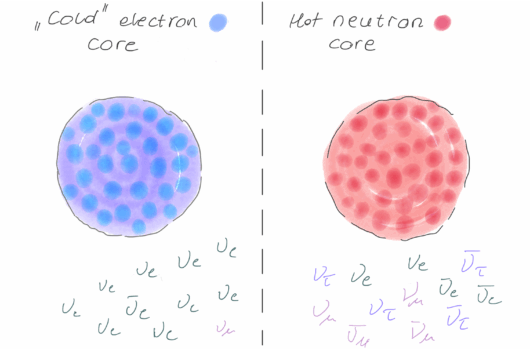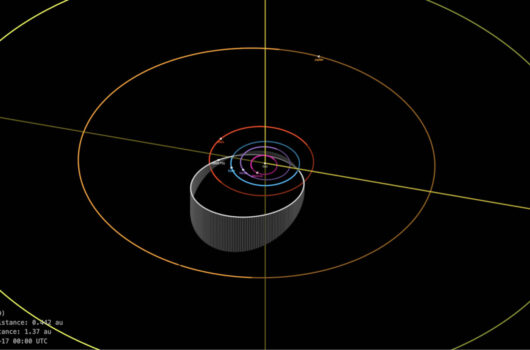Toward First-Principles Multi-Messenger Predictions: Coupling Nuclear Networks with GR Radiation-MHD in Gmunu
Toward First-Principles Multi-Messenger Predictions: Coupling Nuclear Networks with GR Radiation-MHD in Gmunu
View
Abstract
We present a new implementation of nuclear reaction networks in the ![]() eneral-relativistic
eneral-relativistic ![]() ltigrid
ltigrid ![]() merical (
merical (![]() ) code, a framework for general relativistic radiation magnetohydrodynamics (GRRMHD). The extended code self-consistently evolves nuclear species coupled to hydrodynamics, magnetic fields, and neutrino radiation transport under the conformal flatness approximation to Einstein’s equations. Four approximate nuclear networks are included, with stiff source terms integrated using implicit-explicit Runge-Kutta schemes. Validation is performed through benchmarks including conserved-to-primitive recovery with a tabulated stellar equation of state, one-zone silicon burning, and hydrodynamic tests of shock tubes, acoustic pulses, and detonation fronts of Type Ia supernovae. These tests confirm accurate coupling between nuclear reactions and fluid dynamics, conserving electron and nuclear mass fractions to machine precision.
) code, a framework for general relativistic radiation magnetohydrodynamics (GRRMHD). The extended code self-consistently evolves nuclear species coupled to hydrodynamics, magnetic fields, and neutrino radiation transport under the conformal flatness approximation to Einstein’s equations. Four approximate nuclear networks are included, with stiff source terms integrated using implicit-explicit Runge-Kutta schemes. Validation is performed through benchmarks including conserved-to-primitive recovery with a tabulated stellar equation of state, one-zone silicon burning, and hydrodynamic tests of shock tubes, acoustic pulses, and detonation fronts of Type Ia supernovae. These tests confirm accurate coupling between nuclear reactions and fluid dynamics, conserving electron and nuclear mass fractions to machine precision.
As an application, we conduct spherically symmetric core-collapse supernova simulations. The models reproduce the expected non-exploding behavior of standard progenitors, while enhanced neutrino heating revives the shock. Including nuclear burning modifies the post-shock composition and dynamics, converting silicon and oxygen layers into iron-group nuclei and strengthening the explosion. This demonstrates the impact of explosive burning on ejecta composition and shock evolution, and establishes the stability of the coupled GR radiation-MHD-nuclear framework. The implementation is fully compatible with multidimensional GRMHD simulations and represents the first GRRMHD code combining M1 neutrino transport with fully coupled nuclear burning.




